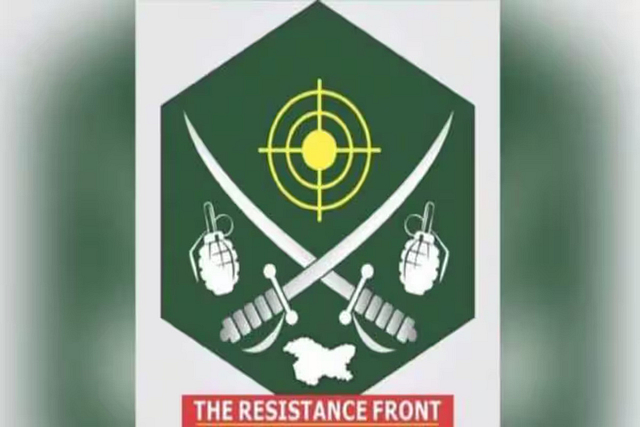Defence
All About The Resistance Front — The Lashkar-e-Taiba Proxy In The Crosshairs Of The Ongoing Encounter In J&K's Anantnag

Terror organisation Lashkar-e-Taiba (LeT's) front outfit The Resistance Front (TRF). (Pic via TRAC)
In a tragic encounter in Anantnag, Jammu and Kashmir, three security force officers lost their lives yesterday in an ongoing operation against terrorists believed to be affiliated with The Resistance Front (TRF).
The casualties included Colonel Manpreet Singh, Commanding officer of the Rashtriya Rifles battalion stationed in the area, alongwith Major Ashish Dhonak and Jammu and Kashmir Police (JKP) Deputy Superintendent (DSP) Humayun Bhat.
This militant outfit, known for its involvement in numerous acts of terror in J&K, has become a significant challenge for security forces in the region.
The encounter in Anantnag is the latest in a series of incidents involving TRF, which, according to security forces, is believed to be a front of the notorious Pakistan-based terror organization Lashkar-e-Taiba (LeT).
In 2019, following the abrogation of Article 370, TRF emerged as an online entity and later evolved into a physical entity with the inclusion of terrorists from various outfits, including the LeT.
It gets regular support from the existing Pakistani Army's well-oiled terror machinery. According to security officials, the organization receives funding to sustain its activities from the same sources that fund the operations of LeT.
Pakistan, where the entire higher leadership of LeT is based out of, wanted some respite from the hard-hitting sanctions and was desperate to get out of the Financial Action Task Force (FATF) gray list.
The TRF provided this opportunity as it diverted attention from the LeT.
Additionally, Pakistan wanted this to look like an indigenous resistance movement, since names of outfits like LeT and Jaish-e-Mohammed (JeM) have religious connotations.
The outfit operates primarily in Jammu and Kashmir, carrying out attacks on security forces and minority communities, particularly targeting Kashmiri Pandits.
TRF's activities include planning and executing attacks on security personnel and innocent civilians, facilitating weapons and narcotics smuggling, recruitment of terrorists, and infiltration of militants from across the border.
Additionally, the group engages in psychological operations on social media platforms to incite individuals in Jammu and Kashmir to join terrorist outfits.
One of the most concerning aspects of TRF's activities is its involvement in targeting minority communities.
The outfit has issued threats to the Sikh community in Jammu and Kashmir and has warned Sikh youths working as Special Police Officers (SPOs) that they would be labeled as RSS agents and targeted.
The Indian government banned TRF earlier this year under the Unlawful Activities Prevention Act (UAPA) and designated its commander, Sheikh Sajjad Gul, as a terrorist.
Gul, suspected of being involved in the conspiracy to kill Kashmiri journalist Shujaat Bukhari in 2018, is believed to have played a significant role in TRF's operations.
The Resistance Front is known for claiming responsibility for a significant number of attacks in J&K, which often serves to deflect attention from the LeT.
Support Swarajya's 50 Ground Reports Project & Sponsor A Story
Every general election Swarajya does a 50 ground reports project.
Aimed only at serious readers and those who appreciate the nuances of political undercurrents, the project provides a sense of India's electoral landscape. As you know, these reports are produced after considerable investment of travel, time and effort on the ground.
This time too we've kicked off the project in style and have covered over 30 constituencies already. If you're someone who appreciates such work and have enjoyed our coverage please consider sponsoring a ground report for just Rs 2999 to Rs 19,999 - it goes a long way in helping us produce more quality reportage.
You can also back this project by becoming a subscriber for as little as Rs 999 - so do click on this links and choose a plan that suits you and back us.
Click below to contribute.
Latest